Description
Evaluation of Hot Mix Asphalt Containing Processed and Conventional Crumb Rubber
Amir Kavussi, Mehrdokht Doosti, Mehdi Azarnia, Soheila Javadian and Konrad Mollenhauer
ABSTRACT. Crumb Rubber (CR) modification of HMA mixes is recognized to be a very affordable and effective method of improving performance of asphalt pavements. CR, if is well reacted with bitumen binder of the mix, can enhance fatigue life and rutting resistance of HMA mixes and decrease their moisture susceptibility. In addition, CR-modified mixtures provided several economic and environmental benefits. Despite all the efforts that have been made to enhance crumb rubber asphalt technologies, rubber modified mixes suffer from several drawbacks. In fact, mixing CR with asphalt binder in the wet processing method, which is the most widely used CR application system, requires special mixing units and long processing times. This results in initial aging, coagulation of rubber particles, and increased production costs. In this study, an innovative technique was developed to manufacture a material named Processed Crumb Rubber (PCR). In this method, in order to facilitate the mixing process; crumb rubber, asphalt binder, and some surface-activated minerals are mixed in a pre-defined condition so that to produce PCR. This material is added to pugmill while mixing aggregates with bitumen binder. At the same time, Crumb Rubber (CR) modified binder was prepared, applying conventional wet processing method. HMA mixes were prepared, applying different amounts of PCR in dry processing and CR modified binder in wet processing method. Indirect Tensile Strength (ITS), Indirect Tensile Fatigue (ITFT), and Repeated Load Axial (RLA) tests were performed in order to assess moisture susceptibility, fatigue behavior, and permanent deformation characteristics of the modified mixes. Additionally, the effect of freeze-thaw cycles on fatigue resistance of the modified HMA mixes were determined, subjecting all mix types to different freeze-thaw cycles. Moisture susceptibility testing indicated that PCR and CR modified mixes improved ITS results, both at dry and saturated conditions. Furthermore, by comparing fatigue life and rutting potential of samples, with applying ITFT and RLA tests, it resulted that samples containing PCR exhibited enhanced mechanical characteristics, compared with the control and the CR modified mixes. It also concluded that as a result of the increased freeze-thaw cycles, fatigue life of both CR and PCR modified mixes were decreased.
KEYWORDS: Fatigue and rutting resistance, Moisture susceptibility, Crumb rubber (CR), Freeze-thaw cycle, processed crumb rubber (PCR).

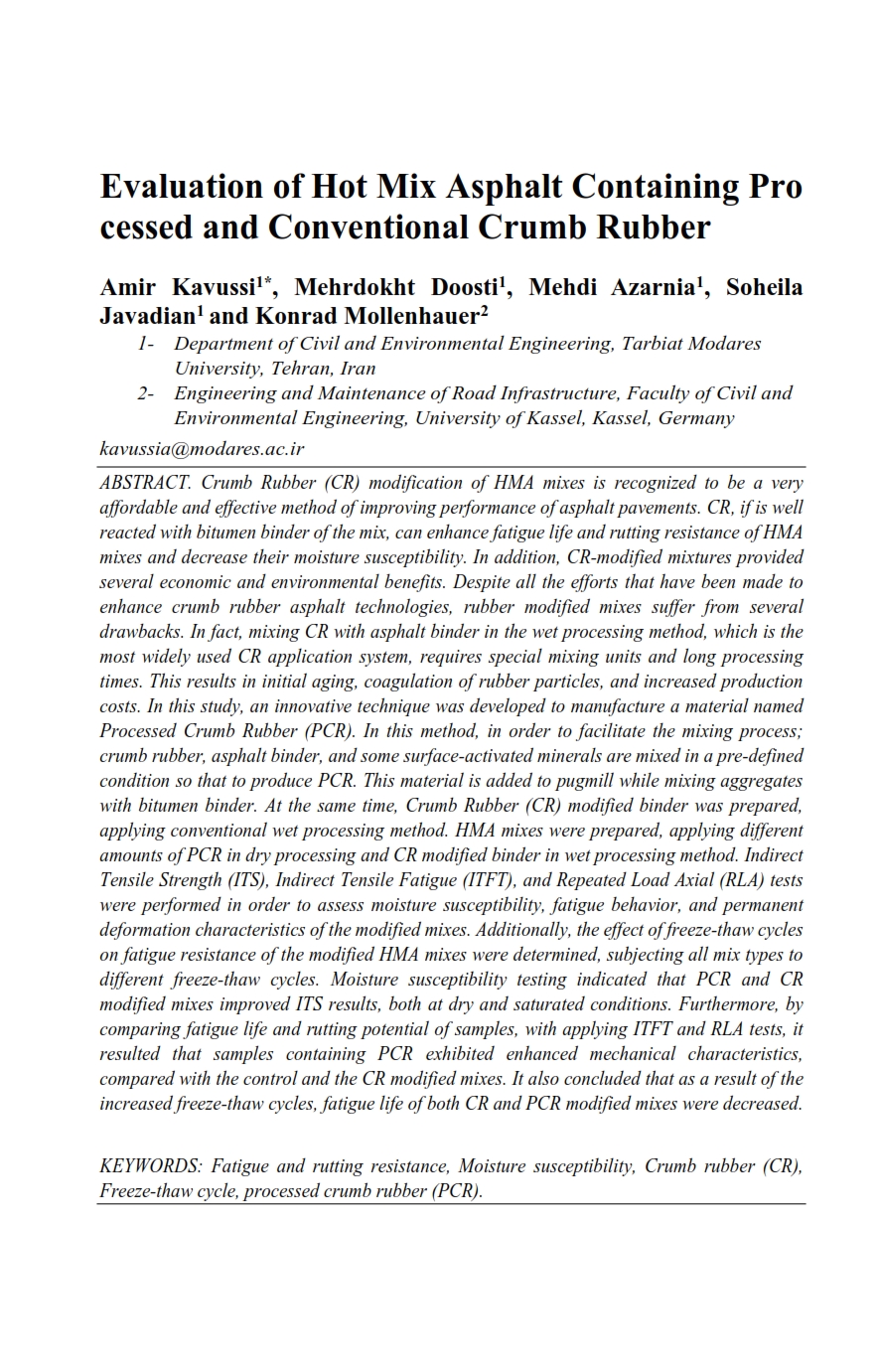
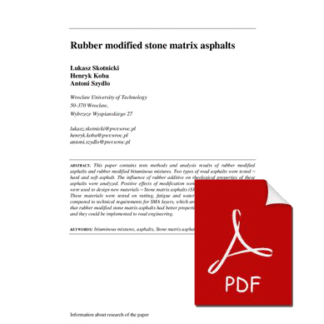
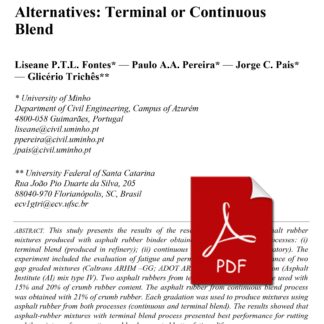
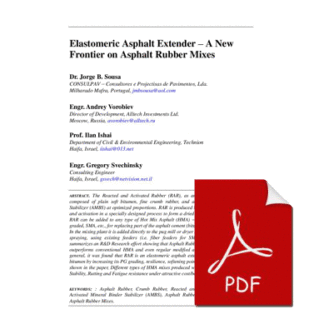


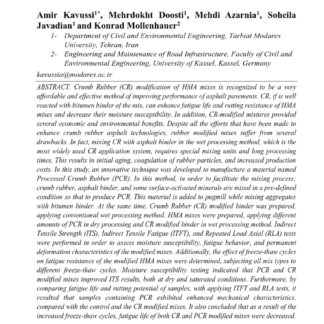
Reviews
There are no reviews yet.